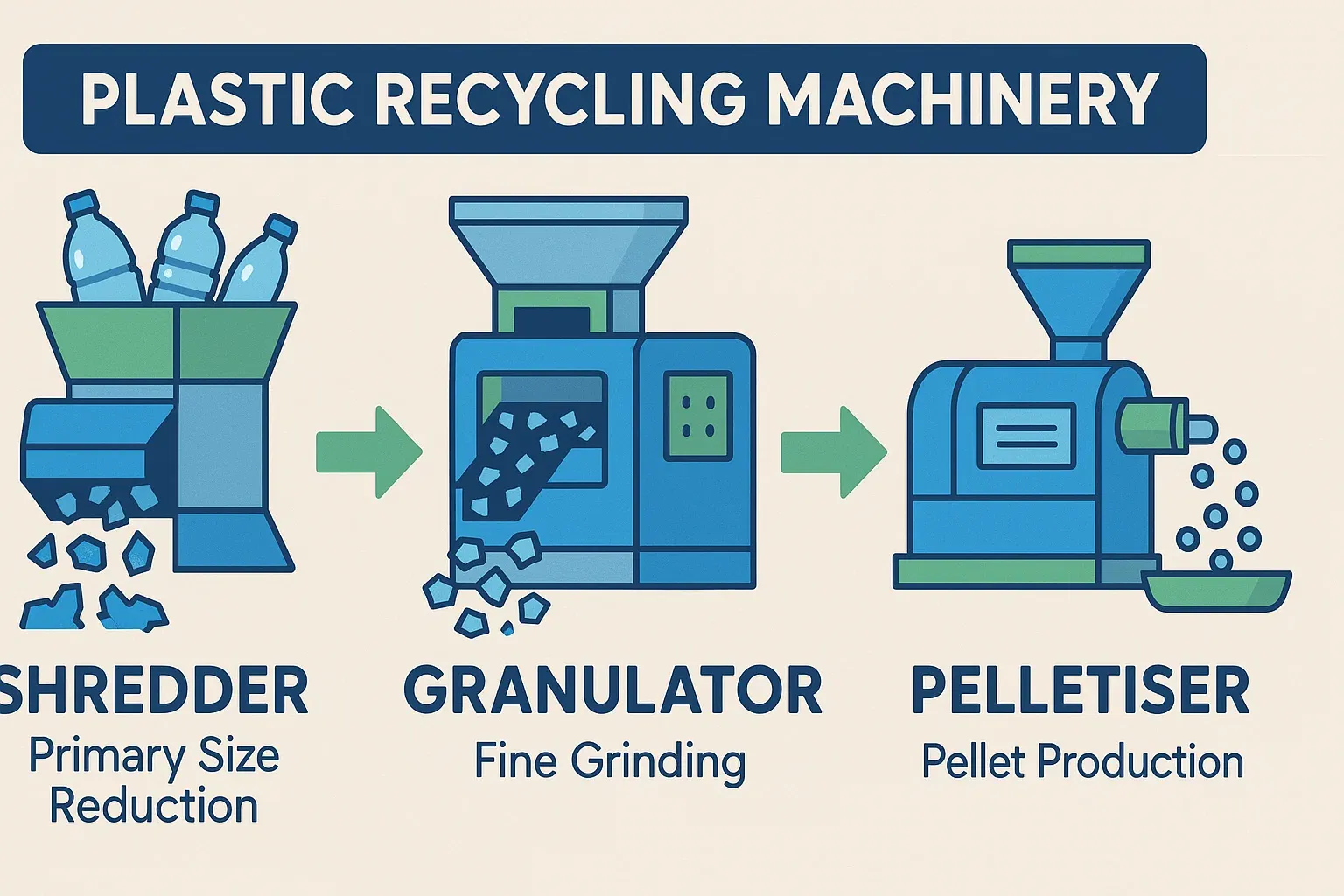Granuladores vs. Trituradores vs. Peletizadores: Comprensión de las diferencias y sinergias
En el ámbito del reciclaje de plásticos, los granuladores, trituradores y peletizadores son tres equipos comunes, pero funcionalmente distintos. Comprender claramente sus diferencias e interconexiones es crucial para optimizar los procesos de reciclaje.
Desfibradora
Una trituradora se utiliza principalmente para la trituración inicial de residuos plásticos grandes, voluminosos o mixtos. Generalmente, emplea métodos de desgarro, cizallamiento o impacto para producir piezas más grandes e irregulares. Las trituradoras suelen servir como equipo de preprocesamiento para granuladores, especialmente cuando se trabaja con materiales demasiado voluminosos o difíciles de introducir directamente en la tolva. El objetivo principal es reducir el volumen del material para facilitar su posterior manipulación, priorizando la uniformidad de la partícula final.
Granulador
Un granulador, como su nombre indica, utiliza cuchillas giratorias de alta velocidad para cortar y descomponer finamente plásticos, produciendo partículas o escamas más pequeñas y relativamente uniformes (a menudo llamadas remolido). Este remolido puede reutilizarse directamente en la fabricación o servir como materia prima para una peletizadora.
Peletizador
Una peletizadora se ubica típicamente al final de la línea de reciclaje. Toma plástico limpio y triturado (posiblemente granulado), lo funde y lo extruye a través de un cabezal de matriz en hebras. Estas hebras son cortadas por una unidad de peletización (por ejemplo, de anillo de agua, refrigerada por aire, sumergida) en gránulos de plástico uniformes y comercializables. Estos gránulos tienen forma, tamaño y densidad aparente consistentes, lo que facilita su almacenamiento, transporte y uso en procesos posteriores de moldeo de plástico.
Sinergias en las líneas de reciclaje
Estos tres tipos de equipos pueden funcionar sinérgicamente en una línea de reciclaje. Un proceso típico podría consistir en que los residuos grandes ingresen primero a una trituradora para su trituración gruesa y luego se transporten a un granulador para su molienda fina. El material remolido resultante, tras el lavado y secado, se introduce en una peletizadora para su fundición, extrusión y corte en gránulos de plástico finales. Algunos sistemas integrados incluso combinan las funciones de trituración, alimentación y extrusión (peletización) en un solo paso.
La configuración óptima de una línea de reciclaje (p. ej., Trituradora → Granuladora → Peletizadora vs. Granuladora → Peletizadora) depende en gran medida de la forma y el volumen del material de entrada, así como de las especificaciones requeridas para el producto final. No existe una secuencia ideal. La elección del equipo y su orden es una decisión estratégica basada en las características del material y los objetivos de procesamiento, crucial para los ingenieros que diseñan líneas de reciclaje.
Consecuencias de la mala interpretación de las funciones del equipo
Confundir las distintas funciones de las trituradoras, granuladores y peletizadores puede resultar en un procesamiento ineficiente, un mayor consumo de energía y una menor calidad de los materiales reciclados, lo que en última instancia afecta la rentabilidad de la inversión. Por ejemplo, usar un granulador para procesar materiales muy grandes o duros, más adecuados para una trituradora, provocará un desgaste excesivo de las cuchillas y las cribas, bloqueos frecuentes y sobrecarga del motor. De igual manera, esperar que el material triturado granulado posea las mismas propiedades físicas que los gránulos peletizados es poco realista. Diferenciar claramente las funciones de estos equipos ayuda a los compradores a tomar decisiones de inversión informadas y permite a los ingenieros diseñar sistemas de reciclaje eficientes.



